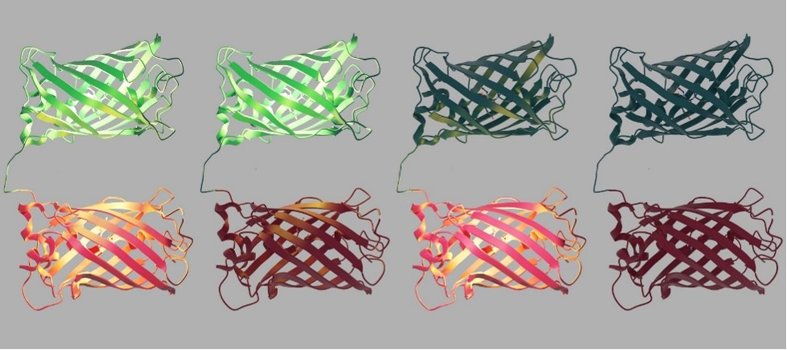Exploring the “dark side” of fluorescent proteins
Genetically encoded visible fluorescent proteins (VFPs) are a key tool used to visualize cellular processes. However, compared to synthetic fluorophores VFPs are photophysically complex. This photophysical complexity includes the presence of non-emitting, dark proteins within the ensemble of VFPs. Quantitative fluorescence microcopy approaches that rely on VFPs to obtain molecular insights are hampered by the presence of these dark proteins. Determining the fraction of dark VFPs is challenging and there is therefore hardly any data on dark fractions of specific VFPs available. At NBP we have developed two different methods to determine VFP dark fractions. In this project you will determine dark fractions of VFPs using these different methods. This data will not only enable quantitative microscopy, it may also enable the development of new VFPs with low dark fractions.

Approach: You will use state of the art fluorescence based methods to determine VFP dark fractions. In the first direct method, you will make use of VFP tandems and single molecule Two-Color Coincident Detection (TCCD). In the second method you will rely on comparing the bright state quantum yield obtained by photonic manipulation to the ensemble averaged quantum yield of the VFP.
You can:
- Express the fluorescent protein (tandems).
- Master the TCCD instrumentation and data analysis.
- Apply nanophotonic manipulation to VFP samples: 1 determine bright state quantum yields and 2 Derive dark fractions.
- Relate findings to molecular structures.
- Verify quantification biochemically.
If you are interested, please feel free to contact us. Within the Nanobiophysics group we try to provide you a with BSc/MSc assignment that fits your expertise and interest.
Please contact:
Mireille Claessens: m.m.a.e.claessens@utwente.nl, Zuidhorst 163
Christian Blum: c.blum@utwente.nl, Zuidhorst 168
